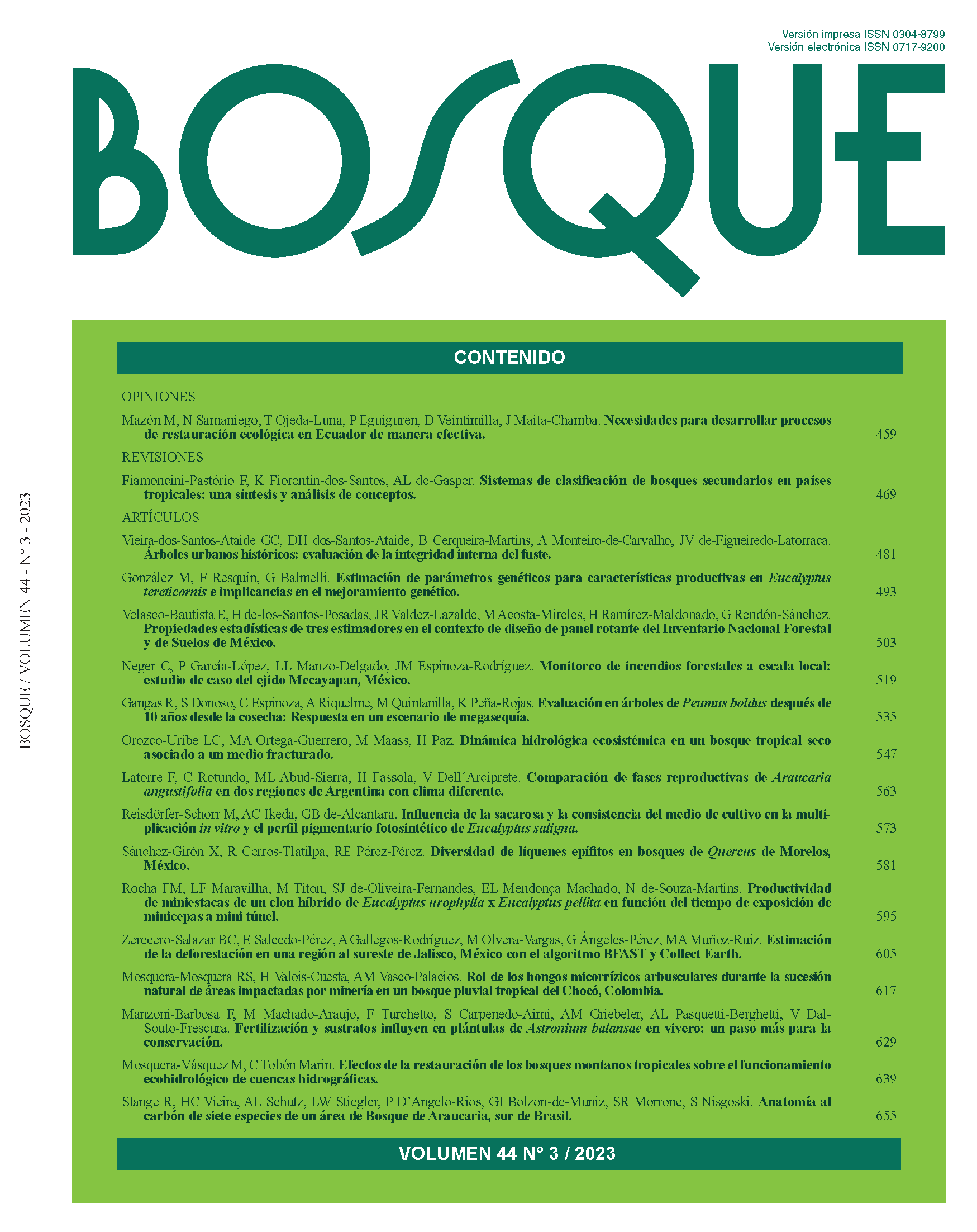Estimation of genetic parameters for productive traits in Eucalyptus tereticornis and implications for breeding
Main Article Content
Abstract
Eucalyptus tereticornis exhibits adaptation to a wide range of soils and environments, making it suitable for various protective and productive purposes throughout the territory of Uruguay. Due to the absence of a locally improved seed source, INIA began a tree breeding program in 2007 using genetic material from two sources: the natural distribution area of the species and local plantations. The performance of the genetic pool was evaluated at different sites over a nine-year growth period. The objectives of this study were to estimate genetic parameters (heritability, genetic correlations, and genotype-by-environment interaction) for growth and stem form traits and to estimate the genetic gains achievable through selection at different ages, in order to guide the breeding strategy for E. tereticornis. The genotype-environment interaction for volume and survival exhibited moderate to low levels, with Type B genetic correlations ranging from 0.68 to 0.82. The combined analysis of the trials revealed that heritability increased with the age of measurement for all traits, with values ranging from low to moderate for growth variables (0.04 – 0.23) and stem form (stem straightness and forking) showing low values (0.05 – 0.12). Genetic correlations between growth traits at different ages and volume at 9 years were positive and high (0.32 – 0.99), while the correlations between stem form (stem straightness and forking) and volume were low to moderate (0.30 – 0.56). The results obtained suggest that it is possible establish a single breeding unit and that through early selection, genetic gains can be maximized, evaluation costs reduced, and improved seed obtained in a shorter timeframe.

